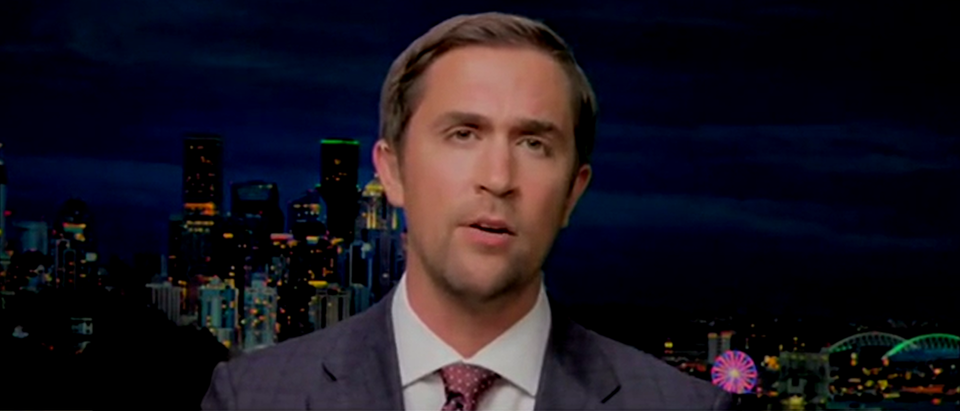A rot has taken hold in American society — in our education system, the corporate world, government bureaucracy, and all of our cultural outlets. Gone are the days of life, liberty, and pursuit of happiness — we now live in a regime where diversity, equity, and inclusion (DEI) are the guiding light.
The layman political observer senses this in his gut, even if he does not fully understand the terms. He recognizes the insidious nature of the ideology that undergirds the euphemisms, even if he cannot fully articulate it. He finds their widespread support inexplicable given the destruction they sow. This leaves the American public partially in the dark — defending their principles with one hand tied behind their backs.
In his new book, “America’s Cultural Revolution: How The Radical Left Conquered Everything,” Christopher Rufo provides a remedy to this disconnect.
Today is the day. My book “America’s Cultural Revolution” goes into publication as the #1 bestseller on Amazon. I put my whole heart into writing this book, hoping to reshape the national narrative and create a path for a conservative counter-revolution.https://t.co/u0eGLgCaRL
— Christopher F. Rufo ⚔️ (@realchrisrufo) July 18, 2023
Famous for bringing critical race theory into the public spotlight, Rufo aims to expose the tenets of DEI ideology for all to see. He examines its theoretical roots in the university and 1960s counter-culture, showing how it captured institutions and trickled down into bumper sticker leftism. He breaks through the dense academic language to reveal the pseudo-intellectual immorality of ideologues whose greatest power is convincing the world of their own moral and intellectual superiority. An accessible toolkit for the average reader, Rufo seeks to prepare us for nothing short of a “counter-revolution.” (RELATED: Just 3 Companies Are Leading The Charge In The Marxist Takeover Of America)
The first step is understanding how we got here. Rufo builds a narrative around four thought leaders that define the current moment. Radical professor Herbert Marcuse re-imagined Marx’s proletariat as a coalition of “the privileged and the dispossessed” and began the critical “transvaluation of all prevailing values.” Angela Davis and the Black Panthers racialized this thesis, rationalizing violence on behalf of “black liberation.” Brazilian educator Paulo Freire aimed to foster “class suicide” among the middle class, and “became the bible of teachers colleges throughout the United States.” Lastly, Harvard law professor Derrick Bell was the godfather of critical race theory and his disciples crafted his legal theories into a volatile political weapon.
Together, they form the intellectual foundation of the DEI regime — from corporate diversity training and Black Lives Matter street violence, all the way to the heart of the federal government.
Great to talk about the spirit of Breitbart and “America’s Cultural Revolution” with Bannon. pic.twitter.com/twePVE5k2s
— Christopher F. Rufo ⚔️ (@realchrisrufo) July 22, 2023
Rufo’s analysis reveals the common thread in their success. Over the decades, 1960s radicals learned to couch their language in the social sciences and make an emotional appeal to American elites. The ideology of black liberation became a targeted science of combating “systemic racism” and inequity. The Panther’s raised fist of defiance turned into a “therapeutic pursuit” that wrapped “identity, emotion, trauma, and psychological manipulation” into a political project.
This is the key to understanding why the far-left has made such rapid and substantial gains into the heart of American culture and bureaucracy.
Activists used the moralizing-scientific approach as their weapon to delegitimate authority in and out of government. Once an organization’s bureaucracy is neutralized, they dig in, expand, and use its existing institutional mechanisms to enforce their new orthodoxy. Combating bigotry is ultimately a false premise. Their project is really about revolutionary power — overthrowing the existing American framework of traditions and values.
Now equipped with the key to understanding them, Rufo gives the average reader the ability to resist them. The activists spitting poison into American society are nothing more than paper tigers — their authority is hollow. (RELATED: No One Should Be Surprised That Social Conservatism Is On The Rise)
He shows that the progenitors of critical race theory are not the intellectual heavyweights that America’s cultural arbiters treat them as. Their theories do not hold up to the critical scrutiny of more gifted scholars. Now finding themselves in power, they lack the ability to build; they can only dissect. Cries to fight “systemic racism” by credentialed activists sound imposing, but once the reader understands what that truly means, it loses its heft. There is no substance in it — it is a meaningless buzzword only useful for justifying leftist rule.
So too, goes their moral superiority. Old leftists at least had a genuine moral mandate to uplift the working class, but the New Left despises the traditional proletariat. Instead, Rufo shows their program is based on “violence, revenge, hatred, [and] madness.” The New Left killed blacks in the name of black liberation; Freire prioritized his disastrous ideology over actually educating the masses; Bell forswore the lessons of his childhood adversity in favor of a rabid racial hatred. For each thinker, Rufo shows how their personal dearth of morality translates to an evil political scheme.
Rufo stepped into his enemies’ shoes, and became what he sought to destroy. Some ostensibly on the right have asserted this as a pejorative, but they are wrong; this is the only way to win. He created a critical theory of critical theory, a transvaluation of values back to the timeless American principles the left supplanted — “excellence over diversity, equality over equity, dignity over inclusion, order over chaos.”
The reader will come away with a concrete understanding of leftist euphemisms and the nefarious motivations they obscure. The counter-revolution is inevitable — the regime is too spiteful, incompetent, and intellectually fragile. When it comes, readers will be prepared to mount a full-throated defense of why it deserves to fall.


